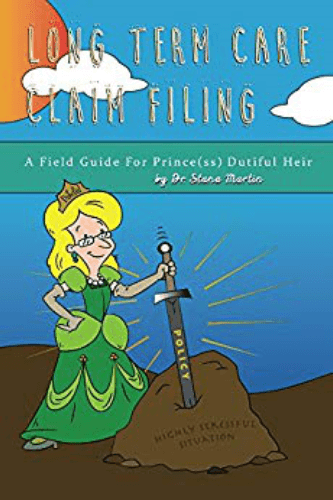The American Association of Long Term Care Insurance (AALTCI) publishes data each year on the state of long term care insurance in the USA. This year’s data identified the states with the highest number of policy holders. The top 10 are:
| RANK | STATE | NUMBER OF
POLICY HOLDERS in 2020 |
| 1 | California (CA) | 609,244 |
| 2 | Texas (TX) | 417,179 |
| 3 | New York (NY) | 371,460 |
| 4 | Illinois (IL) | 313,343 |
| 5 | Florida (FL) | 308,416 |
| 6 | Pennsylvania (PA) | 237,688 |
| 7 | Virginia (VA) | 230,456 |
| 8 | Ohio (OH) | 222,393 |
| 9 | Minnesota (MN) | 208,479 |
| 10 | New Jersey (NJ) | 200,759 |
Why would anyone want to know this? Well, claims…
Long term care insurance claims are more document intensive than really any of us would like them to be. We’d all like them to function like Medicare – they just don’t. So, in states where you have a higher density of policy holders, you have potentially two issues:
- Complaints to Insurance Commissioner’s Office: it is a matter of math. If 1 in every 1000 policy holders is mad enough to write a complaint, then there will simply be more complaints in states with high numbers of policy holders. If you are using the state’s complaint index as a measure of whether a company is a good company or not, you should filter that information thru how many policy holders the states have in general. Usually policy holders are upset enough to complain when one of two things happen: either the have a large rate increase, or they think the insurance company is not treating their claim fairly. Both of these issues mean that the more policy holders there are in a state, the more complaints the state will register over all – across all insurance companies.
- Provision of high quality care: long term care policies are designed to provide a resource for a claimant so they can pay for care in environment of their choice. Historically 80% of claims start with in-home care and progress to other levels as the claimant needs more and more help. Where there are a high density of policies, you may see more folks utilizing home care than in states where the density is lower. Anything more than about 40 hours a week of in-home care will run more per day than a local assisted living, typically. If policy holders are flush with resources, though, they may opt to stay at home longer. We already know there is a dearth of care givers in the USA. This will worsen as the Boomers age and need increasing levels of attention. The more money a person has to pay for care, the more likely they are to attract better care providers. We’d all like to think that everyone gets the same level of care in the USA today. We are an egalitarian society in our ethos. But the plain truth is that money still talks. Workers will go where the money is – and high quality care providers will demand top dollar. States with a high density of policy holders (or a high density of personal wealth) have the potential to skew the care giver market.
So whether you are shopping for a policy (and looking at the consumer complaint index) or facing a claim in the near future, knowing which states have the highest density of policy holders, can be a useful tidbit of information.
Stana Martin, PhD, founded Mrs LTC to provide a top-quality resource for clients and customers who need help with long term care claims or insurance comparisons.
Questions?
Contact - Mrs. LTC
Long Term Care Claims & Insurance
Question about a Claim?
Shopping for coverage?








